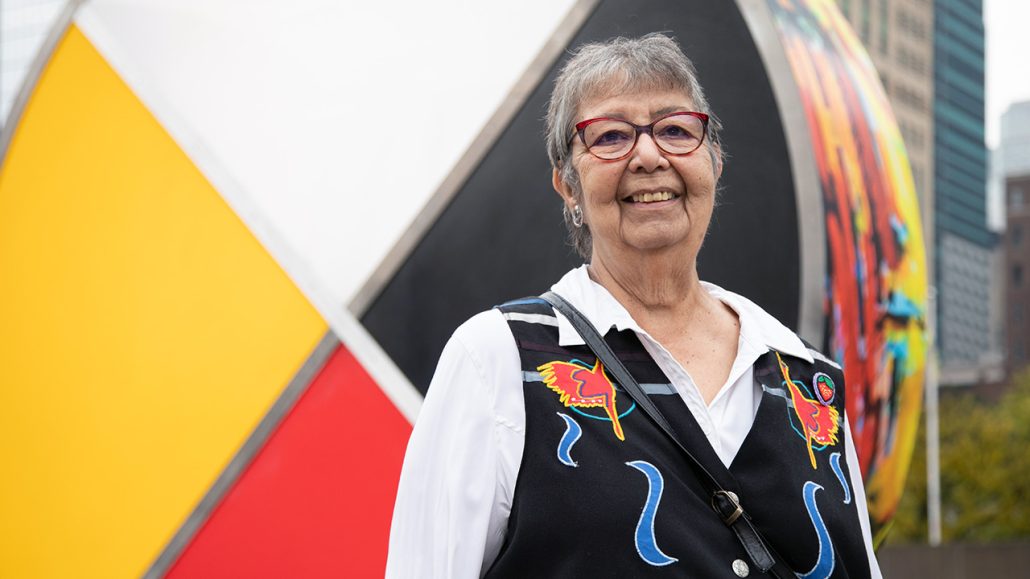

Photo by Daria Perevezentsev
Creation of the Indigenous Partnership Council marks a change in the approach of the United Way — and a step toward reconciliation
Large funding organizations, like the United Way Greater Toronto (UWGT), can be a challenging place for small Indigenous organizations to seek support, said Frances Sanderson.
“It’s a very difficult, bureaucratic process with a lot of legwork that goes into it,” said the executive director of the non-profit Indigenous housing provider Nishnawbe Homes.
The United Way Greater also noticed that Indigenous community groups weren’t applying for funding. So, as part of their reconciliation and action plan, in 2019, they reached out to Indigenous community members, like Sanderson, to learn about the roadblocks that they were facing when it came to seeking funding.
After hearing the challenges that Indigenous organizations were facing, the UWGT hired an Indigenous coordinator to work with the community to help them navigate United Way’s application and funding process. But one person, in one role, wasn’t enough. “It just didn’t work,” Sanderson said.
Sanderson proposed a novel idea — to start an Indigenous-led committee that would develop programs and allocate funding for Indigenous organizations. The UWGT supported Sanderson’s idea, and, by the end of 2021, the Indigenous Partnership Council was created. Its members include representation from Indigenous educational facilities, shelters, housing and social service organizations to name a few.
“It was born out of recognition that the way to truly reconcile with the community is to help the community decide for themselves,” Sanderson said.
The Indigenous Partnership Council addresses both big-picture initiatives and smaller, more immediate needs, like offering childcare programming at a shelter. For the former, the council is in the very early stages of creating a healing centre where the Indigenous community can go to seek help from Indigenous healers for addictions and substance abuse — something that doesn’t currently exist in the city.
“We’re trying to decide where it’s going to go, how much it’s going to cost and who is going to be in charge of it,” Sanderson said.
The healing centre is still a long way from being built, so, recognizing that there are people with addictions and mental health needs that need help now, the Indigenous Partnership Council has also approved the use of funds for the immediate and urgent needs of the community as they emerge.
Patricia O’Campo, former co-chair of the UWGT’s Board of Trustees and former board chair of the Indigenous Partnership Council, said that the United Way hasn’t always been a welcoming place for Indigenous organizations to seek funding for their work.
“The United Way, as part of its reconciliation journey had to prove that we were serious about this partnership and be open to hearing about how the United Way has made mistakes in the past,” she said. A major part of the journey, especially in its early stages, was listening to the needs of Indigenous leaders.
“We spent the first few meetings listening to what they had to say,” said O’Campo. “We had to earn their trust and earn the right to create this council.”
The Healing Centre is a great example of how the Indigenous Partnership Council is identifying needs that will be most beneficial and impactful to its own communities. “The United Way hasn’t really been engaged in the health space,” O’Campo said. “But the council has identified that this is a priority and a need.”
The Indigenous Partnership Council, whose members come from the very organizations and communities that funding would benefit, is helping to foster positive relationships with the Indigenous community.
“It’s a unique approach by the United Way Greater Toronto,” said O’Campo. “We don’t have similar councils for other groups. It’s the United Way’s attempt to honour the rights of Indigenous peoples.”
Sanderson said she already has noticed a difference in the way the Indigenous Partnership Council operates compared to her previous interactions with funding organizations.
“It feels friendly,” she said. “There’s talking. There’s finding out about the history of your organization. It’s more accessible and understanding. There’s a lot more personal interaction.”
Since she and many Indigenous Partnership Council representatives are already familiar with the organizations that will be seeking funding from United Way, she said the application process will be much easier and smoother for Indigenous groups to navigate.
“We understand these organizations, and many of us deal with these organizations already,” Sanderson said. “We know their value. We know their programming and who their clientele is. There will be less paperwork.
She said that while the United Way has representatives on the council, Indigenous leaders are still in charge. “They’re not driving the boat,” Sanderson said. “They’re passengers.”
The result so far, said Sanderson, is an inviting environment, which is a much-improved and much-needed change. She said the development of the Indigenous Partnership Council can serve as an example of how funding organizations, like the UWGT, should work with Indigenous communities in the future. “I want it to be the norm,” she said. “I don’t want it to be the exception.”